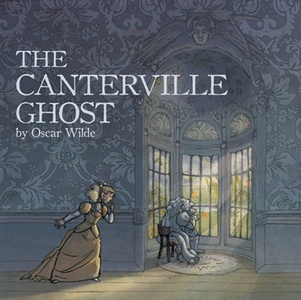Standing on the step to receive them was an old woman, neatly dressed in black silk, with a white cap and apron. This was Mrs. Umney, the housekeeper, whom Mrs. Otis, at Lady Canterville’s earnest request, had consented to keep on in her former position. She made them each a low curtsey as they alighted, and said in a quaint, old-fashioned manner, “I bid you welcome to Canterville Chase.” Following her, they passed through the fine Tudor hall into the library, a long, low room, panelled in black oak, at the end of which was a large stained-glass window. Here they found tea laid out for them, and, after taking off their wraps, they sat down and began to look round, while Mrs. Umney waited on them.
Suddenly Mrs. Otis caught sight of a dull red stain on the floor just by the fireplace and, quite unconscious of what it really signified, said to Mrs. Umney, “I am afraid something has been spilt there.”
“Yes, madam,” replied the old housekeeper in a low voice, “blood has been spilt on that spot.”
“How horrid,” cried Mrs. Otis; “I don’t at all care for bloodstains in a sitting-room. It must be removed at once.”
The old woman smiled, and answered in the same low, mysterious voice, “It is the blood of Lady Eleanore de Canterville, who was murdered on that very spot by her own husband, Sir Simon de Canterville, in 1575. Sir Simon survived her nine years, and disappeared suddenly under very mysterious circumstances. His body has never been discovered, but his guilty spirit still haunts the Chase. The bloodstain has been much admired by tourists and others, and cannot be removed.
Oscar Wilde
The Canterville Ghost, 1887
